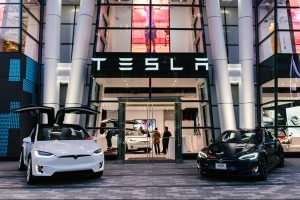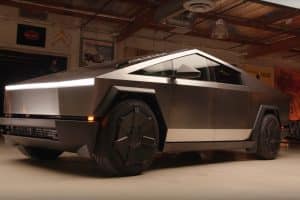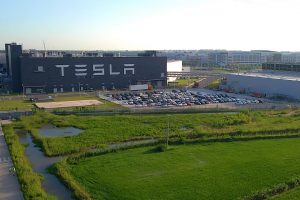Key Points
- 🚗 Lucid Motors has adopted Tesla’s North American Charging Standard (NACS) for its electric vehicles (EVs).
- 🛠 Lucid will integrate Tesla’s charging port into its EVs starting in 2025 and plans to offer adapters for current charging system hardware.
- 😬 Tesla CEO Elon Musk believes that Lucid’s adoption of NACS may have been difficult for Lucid’s CEO to accept given his previous statements.
- 📈 Tesla has been developing higher-voltage charging technology and deploying V4 Superchargers with faster charging rates.
- 💡 Lucid CEO Peter Rawlinson’s stance on the importance of charging standards has evolved over the past few months.
- 📉 Lucid recently missed analyst delivery estimates for the third quarter and lowered its 2023 production goal.
- 🌐 Tesla opened the NACS design to other automakers about a year ago, leading to widespread adoption of the standard.
Lucid Motors has joined several automakers in adopting Tesla’s North American Charging Standard (NACS), just months after its CEO said it wouldn’t switch unless higher-voltage charging architecture was unveiled. Following Lucid’s announcement of plans to adopt the standard this week, Tesla CEO Elon Musk pointed out that the switch was probably a little difficult for Lucid’s CEO to accept after some of his past statements.
On Tuesday, Lucid announced it would be adopting Tesla’s NACS, giving its drivers access to the Supercharger network as soon as 2025. Like other automakers, the company will build Tesla’s charging port into its electric vehicles (EVs) starting in 2025, and it plans to offer adapters to those with the current Combined Charging System (CCS) hardware in the same year — both of which will enable its cars to charge at Tesla’s Superchargers.
Following the announcement, Musk commented on X that the adoption of Tesla’s standard “must have been a bitter pill to swallow,” especially after the automaker’s CEO recently suggested that the charging port didn’t matter.
The news comes after Lucid CEO Peter Rawlinson dodged questions about switching to the standard in June, adding that the plug mattered less than high-voltage charging infrastructure. In the months since, a slew of other automakers have also adopted the charging hardware, and Tesla has been deploying new technology, including higher-voltage charging hardware on one upcoming vehicle along with Superchargers sporting higher overall charging capacities.
During Tesla’s third-quarter earnings call last month, the automaker confirmed previous rumors that the Cybertruck will include 800-volt charging architecture, offering faster charging and better overall efficiency. In the U.S. and beyond, Tesla has also been deploying its V4 Superchargers, which offer a charging rate of 350 kW compared to the 250 kW rate offered by V3 chargers.
While neither of the developments from Tesla quite hit Rawlinson’s original demand for a 1,000-volt Supercharger, something about the past few months has obviously changed his mind from thinking the NACS was just a “plastic plug with some copper in it.”
It also comes ahead of Lucid’s Q3 earnings call, set to be reported at 5:30 p.m. ET on Tuesday. You can see top investor questions ahead of the call here, the first of which is a question about how and when the automaker will become profitable.
Last month, Lucid reported a miss on analyst delivery estimates for the third quarter, and the automaker said that it was unlikely to reach its already-lowered 2023 production goal of 10,000 units.
Tesla officially opened the NACS design to other automakers just under a year ago, as detailed by the automaker in a blog post.
With the exception of the startup Aptera, which was an early adopter of the equipment, details surrounding Tesla’s opening of the NACS hardware remained quiet for several months after its announcement. In May, however, Ford CEO Jim Farley broke the silence by announcing plans to adopt the standard in May during a call on X with Musk. Since then, nearly every major and startup automaker has joined the list of companies adopting the standard.





